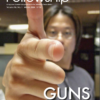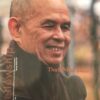Testimony of Mel Duncan before the House Committee on Appropriations, Subcommittee on State, Foreign Operations, and Related Programs of the United States Congress (March 12, 2019).
Madame Chair Lowey, Ranking Member Rogers, and Distinguished Members of the Committee, thank you for inviting me to deliver testimony before your committee today. My name is Mel Duncan. I am the Co-founder and Director of Advocacy and Outreach for Nonviolent Peaceforce U.S., a nongovernmental organization with U.S. headquarters in St. Paul, Minnesota. I am here today to urge you to recognize the practice of Unarmed Civilian Protection as an additional recommended activity in the State, Foreign Operations, and Related Programs appropriations bill fiscal year 2020, including the following programs, which are ranked in order of priority: Women, Peace, Security; Transition Initiatives; South Sudan; Reconciliation Programs; and Contributions for International Peacekeeping Activities.
Unarmed civilian protection refers to a strategy for the protection of civilians, localized violence reduction and supporting local peace infrastructures, in which unarmed, trained civilians live and work with local civil society in areas of violent conflict. These unarmed civilian protectors provide direct protection to civilians under threat of violence and work with local civil society to protect themselves and prevent further outbreaks of violence.
Currently, 42 nongovernmental organizations are providing Unarmed Civilian Protection in 24 areas across the world, including the Philippines, Myanmar, Northern Iraq, South Sudan, and Guatemala.
These well-trained civilians apply one or more unarmed protection strategies that differ from location to location based upon ongoing contextual analysis and community engagement.
 For example, in South Sudan, Nonviolent Peaceforce (NP) has a team that has grown to 200 protectors since we were invited in 2010 (then Southern Sudan). Since the re-ignition of the war in December 2013, thousands of people have been killed and millions of people have been displaced. Tens of thousands have fled to U.N. complexes where impromptu camps, known as Protection of Civilian Areas (POC), have been established. Women living in these POCs have to go to the bush to collect firewood, sometimes walking more than 30 kilometers. Soldiers from both sides often rape them. Rape is used a weapon of war. What is instructive is that during a two-year period when NP’s civilian protectors accompanied them, these women were never attacked.
For example, in South Sudan, Nonviolent Peaceforce (NP) has a team that has grown to 200 protectors since we were invited in 2010 (then Southern Sudan). Since the re-ignition of the war in December 2013, thousands of people have been killed and millions of people have been displaced. Tens of thousands have fled to U.N. complexes where impromptu camps, known as Protection of Civilian Areas (POC), have been established. Women living in these POCs have to go to the bush to collect firewood, sometimes walking more than 30 kilometers. Soldiers from both sides often rape them. Rape is used a weapon of war. What is instructive is that during a two-year period when NP’s civilian protectors accompanied them, these women were never attacked.
These civilian protection accompaniments entail more than just going for a walk. NP scouts the routes in advance, letting combatants know that a group of women accompanied by NP will be coming through. Part of our ability to protect depends on being able to communicate with the combatants. If we surprise someone in the field, then we have not done our job.
 On the island of Mindanao in the Philippines, NP was asked by the government of the Philippines to team with 3 local groups to handle the civilian protection component of the 2009 ceasefire. We successfully did this for four years until the comprehensive peace proposal was signed in 2014. Nine NP teams monitored, verified, reported, and intervened on threats to civilians across the island on a daily basis. More importantly we trained and supported over 300 local people who did the same.
On the island of Mindanao in the Philippines, NP was asked by the government of the Philippines to team with 3 local groups to handle the civilian protection component of the 2009 ceasefire. We successfully did this for four years until the comprehensive peace proposal was signed in 2014. Nine NP teams monitored, verified, reported, and intervened on threats to civilians across the island on a daily basis. More importantly we trained and supported over 300 local people who did the same.
During that time two armed groups converged on a village. The villagers were prepared because this was not the first incursion. We had trained villagers in early warning/early response. Instead of panicking, this time they implemented a protection strategy that included calling on the local group Bantay Ceasefire and Nonviolent Peaceforce (NP), who were at a monitoring post nearby. In route to the village, the civilian protection team called the local commanders of both armed groups, suggesting to the army officers that the patrols must have made a mistake in getting so close to the village. They also said they knew that the armed groups didn’t want to scare civilians, and, furthermore, that the commanders knew that such action violated the current ceasefire. To assure that things would go OK, the civilian protectors said they would go and stay in the village until the patrols left. By the time the civilian protection team arrived in the village both patrols had backed off, and 600 villagers stayed home instead of becoming displaced.
UCP is built on the three pillars of nonviolence, nonpartisanship, and the primacy of local actors. By working nonviolently, civilian protectors do not bring more guns into environments already teeming with violence. By utilizing diverse nonviolent interventions they break cycles of retaliation. Modeling nonviolent behaviors stimulates nonviolent behavior in others. And practicing active nonviolence boosts the sustainability of peace operations and builds the foundation for a lasting peace.
While it has limits like any strategy, UCP can be employed in a variety of stages of a conflict. UCP can sometimes be employed in a complementary manner with U.N. armed peacekeepers, as it is in South Sudan. At other times, it can be employed in areas where U.N. armed peacekeepers cannot or will not go.
Unarmed Civilian Protection is being increasingly studied by third parties, including international organizations and academic institutions. In reviewing evaluations, case studies, reports, interviews and observation of nine UCP organizations, Dr. Rachel Julian of Leeds Beckett University found that through UCP:
- Lives are saved.
- Communities are able to stay at home.
- Peace and human rights work is more possible, involves more people, in a wider area.
- Supports the re-establishment of relationships in divided communities.
- Behaviour of armed actors is changed.
- Demonstrates that violence and threats of violence can be tackled by unarmed trained civilians.
Without supplemental support for the protection of civilians, through methods like Unarmed Civilian Protection, the traditional approach to protecting civilians is inadequate to address the threat to civilians. At the same time, the scope of support for Unarmed Civilian Protection is insufficient to meet growing needs. Pathways for Peace, a joint report by the World Bank and the United Nations found that “Deaths in war, numbers of displaced populations, military spending, and terrorist incidents, among others, have all surged since the beginning of the century.” The U.N. High Commission on Refugees reports that, “Every 2 seconds a person is forced to flee their home. There are now 68.5 million people who are forcibly displaced, a record high.”
In light of this growing need, Unarmed Civilian Protection provides an effective and affordable approach to protecting civilians caught up in violent conflicts. We have appreciated the support of USAID for our work in Myanmar, Northern Iraq, and South Sudan. By specifically recognizing Unarmed Civilian Protection in the State, Foreign Operations, and Related Programs appropriations bill fiscal year 2020, protection can be provided to more vulnerable people who then are able to stay home — not become refugees — and build sustainable peace.
We urge you to recognize the practice of Unarmed Civilian Protection as an additional recommended activity in the State, Foreign Operations, and Related Programs appropriations bill fiscal year 2020, including the following programs, which are ranked in order of priority: Women, Peace, Security; Transition Initiatives; South Sudan; Reconciliation Programs; and Contributions for International Peacekeeping Activities.
Thank you for the opportunity to testify before you today.







